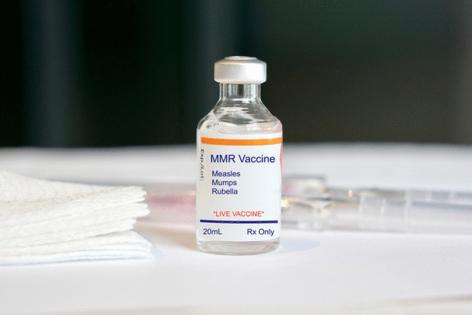Ask the Pediatrician: What parents need to know about measles
Published in Health & Fitness
Measles is a highly contagious disease caused by the measles virus. The infection can lead to serious and sometimes fatal complications. Fortunately, measles is a vaccine-preventable illness.
Measles was under control in the United States, but we are seeing outbreaks again in areas where vaccination rates have fallen. Because measles is so contagious, outbreaks happen quickly. Most of the time, children who get measles are not up to date on recommended vaccines or are not old enough to get the measles vaccine.
The childhood and adolescent immunization program in the United States led to a more than 99% decrease in measles cases since 1963. However, travelers visiting or returning to the United States from other countries can spread measles to people who are at risk and cause an outbreak.
After the first measles infection is reported in a community, it is considered an outbreak because of how quickly measles spreads. Local health experts must work quickly to identify others who were exposed so they can stop measles from spreading.
Measles is one of the most contagious diseases in the world. In fact, 9 out of 10 people exposed to measles will catch it, too, if they are unvaccinated, have not had the disease before or have a problem with their immune system. Even very brief exposure to an infected person in a shared space poses a high risk for unimmunized people.
People with measles are contagious before they know they are sick. An infected person can spread measles easily to others 4 days before the rash appears, and they are still contagious 4 days after the rash appears.
Measles spreads from person to person and through the air from respiratory droplets from a child's cough or sneeze. The virus can live for two hours on surfaces or suspended in the air. Someone who enters a room where someone with measles had been earlier can catch the disease. The virus can also travel along air currents and infect people in another room.
Even brief exposure to the virus poses a high risk of infection to anyone who is not up to date on measles vaccine or has not had measles before. People with conditions that weaken the immune system are also at high risk of infection.
Common signs of measles infection include a high fever and rash. The rash usually appears 3 to 5 days after the first symptoms. It starts on the head and spreads down to the rest of the body. In addition to a fever and rash, other measles symptoms may include a cough, runny nose, and red, watery eyes. Other symptoms may include small spots in the cheek area inside the mouth called Koplik spots, as well as diarrhea and ear infection.
Measles can also lead to serious complications, such as pneumonia, encephalitis (swelling of the brain), deafness, intellectual disability and even death.
...continued
©2024 Tribune Content Agency, LLC.







Comments